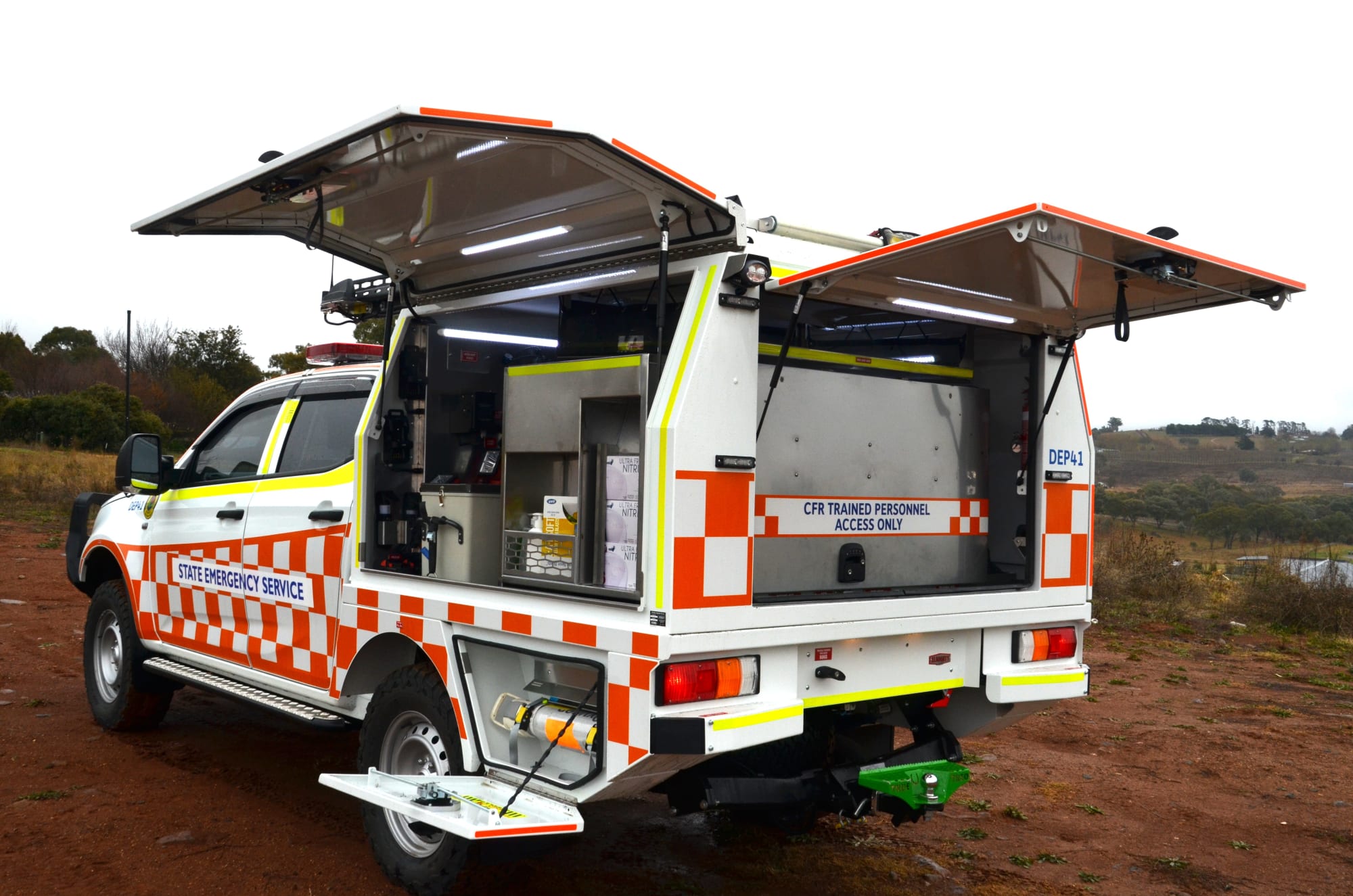Invest
Australia's GDP surprise is real but operators should heed the growth mix warning light
Invest
Australia's GDP surprise is real but operators should heed the growth mix warning light
Australia’s June-quarter growth beat expectations on the strength of household consumption and government spending, even as public investment sagged. The upside surprise signals resilience, but the composition matters: firms face a consumption-led upswing with soft capex and a thin productivity cushion. For boards, this is a window to re-price, re-tool and reposition ahead of a tougher 2026 backdrop flagged by the RBA. Here’s the strategy brief—and the procurement map—for the next 12 months.
Australia's GDP surprise is real but operators should heed the growth mix warning light
Australia’s June-quarter growth beat expectations on the strength of household consumption and government spending, even as public investment sagged. The upside surprise signals resilience, but the composition matters: firms face a consumption-led upswing with soft capex and a thin productivity cushion. For boards, this is a window to re-price, re-tool and reposition ahead of a tougher 2026 backdrop flagged by the RBA. Here’s the strategy brief—and the procurement map—for the next 12 months.

Australia’s economy expanded faster than markets anticipated in the June quarter, surpassing a 0.5% quarter-on-quarter consensus expectation. The catch: growth was carried by households and government consumption, while public investment fell. That is not a trivial detail. It defines where revenue pools will expand, where margins are recoverable, and where risk sits on the 2025–26 horizon.
Demand-mix diagnostic: a Kaldor triangle for operators
Decompose the national accounts and you get a strategic read-out using a simple framing: C (households), G (government), I (investment). This quarter, C+G did the heavy lifting; I sagged. The Reserve Bank of Australia’s February 2025 Statement on Monetary Policy flagged a period of below-trend growth with public demand upgraded on expenditure projections, while productivity (GDP per hour worked) remained subdued. That’s the backdrop for this beat: cyclical resilience, structural fragility.
Implications by sector: consumer-facing businesses can lean into volume recovery; government suppliers should prepare for steady pipelines; capital goods and construction remain patchy until investment re-accelerates. Exporters face a neutral-to-soft impulse absent a decisive rebound in global demand among Australia’s major trading partners, as the RBA cautioned earlier in the year.
Households: spend is holding, but cushion is thin
Household consumption outperformed expectations, aided by real wage stabilisation and targeted fiscal measures. However, the RBA notes the household saving ratio has fallen markedly from pandemic peaks, limiting shock absorption. With mortgage resets still echoing through discretionary budgets and services inflation sticky, consumer wallets are active but not bulletproof.

Playbook for consumer-facing firms: prioritise mix over volume. Tighten assortment to higher-margin SKUs; leverage data-driven promotions that protect unit economics. Supply chain discipline matters: 30–45 day inventory turns, dynamic replenishment, and freight hedging can defend gross margins if demand cools later in 2025.
Government demand: reliable revenue if you can navigate procurement
Public consumption rose even as public investment fell, a split that fits Canberra and state priorities: maintaining essential services (health, education, community services) while re-timing or reassessing capital programs. The Intergenerational Report (2023) projects lower debt-to-GDP trajectories than the 2021 report, preserving fiscal capacity for targeted programs. Budget 2025–26 underscored a growth agenda aimed at lifting household incomes by roughly $5,000 in today’s dollars, reinforcing productivity-oriented spending.
Where the contracts are: digital service delivery (especially in health and tax administration), defence sustainment, skills programs, and housing-related supply initiatives flagged through 2025. Suppliers should pre-qualify on whole-of-government panels, invest in security and privacy certifications, and align with Indigenous procurement and local content requirements. Expect payment terms to be reliable—cash flow friendly compared with many private contracts.
Investment slump: the productivity gap you can arbitrage
The most concerning signal is weak investment—both public capex this quarter and a broader softness in private intentions. Multiple business surveys through 2025 point to cautious sentiment. That’s rational in a higher-for-longer rate environment, but strategically risky: productivity is the only durable offset to rising labour and energy costs.
This is where counter-cyclical operators pull ahead. McKinsey estimates that generative AI could add trillions globally via productivity gains. Locally, momentum is real but inconsistent: the Australian Taxation Office has articulated governance for general-purpose AI, while ASIC’s Report 798 (October 2024) warns of a governance gap as AI adoption accelerates. Translation: the technology is investable if controls are robust.
Board-level move: approve a focused, 12–18 month investment tranche targeting three engines—process automation in back office, AI-augmented frontline (contact centres, sales enablement), and data foundations (governed lakehouse, MDM). Require measurable EBITDA contribution within 4–6 quarters and embed model risk management from day one.
Competitive edge: procurement fluency and AI-first operations
Two advantages will differentiate early movers over the next year:
- Procurement fluency with the state. Understanding grant calendars, standing offers, and evaluation criteria can unlock multi-year, inflation-linked revenue. Defence sustainment, digital health, and cyber uplift are recurring opportunities.
- AI-first operating models. Use retrieval-augmented generation for knowledge work, AI copilots for software development, and anomaly detection for finance and supply chain. The ATO’s governance posture demonstrates that high-trust AI is achievable in Australian public institutions—private firms should mirror that standard to accelerate approval cycles with customers and regulators.
The National AI Centre’s programs and Australia’s AI Month (2024) show the ecosystem is mobilising. But with market concentration in core digital rails (the ACCC noted Google’s search share near 94% as of August 2024), firms should architect for interoperability and avoid single-vendor lock-in.
Implementation reality: where operators win or stumble
Execution will beat macro. Five practical priorities:
- Pricing power: move from broad increases to targeted elasticities; deploy A/B-tested personalised offers to lift realised price without volume loss.
- Working capital: compress days sales outstanding with stricter credit policies; negotiate supplier terms tied to volume commitments.
- Labour: redesign roles around AI tools to lift throughput per FTE; reinvest productivity dividends into capability, not fixed headcount.
- Technology risk: align with ASIC’s governance guidance; institute model inventories, bias testing, and human-in-the-loop controls.
- Energy and transition: where capex is delayed, use energy performance contracts or offtake swaps to de-risk opex volatility while advancing decarbonisation.
Outlook: don’t confuse a beat with a boom
The RBA’s baseline still leans to subdued growth relative to trend. Public demand should remain supportive—policy settings and demographics (ageing, service intensity) will see to that—but households have limited buffer, and the capex cycle needs a catalyst. Housing supply programs highlighted in 2025 reports may gradually lift construction activity, yet execution risk is high.
Strategy for 2025–26: assume a flatter revenue curve, budget for stickier costs, and engineer productivity now. Firms that bank today’s consumption-led tailwinds, align with government demand, and prosecute a disciplined AI-and-automation roadmap will exit 2026 with stronger margins and higher return on invested capital.

Economy
Global deal activity declines by 6% amid economic uncertainty, reports GlobalData
In a year characterised by economic turbulence and evolving market conditions, global deal activity has witnessed a notable downturn during the first ten months of 2025. According to GlobalData, a ...Read more

Economy
Australia’s softening labour market puts another RBA cut in play — here’s what business should do now
A four-year high in unemployment has revived expectations the Reserve Bank could deliver another rate cut as soon as November. With quarterly GDP growth running at 0.6 per cent and annual growth at ...Read more

Economy
Rising CPI reinforces RBA’s stance as rate cut expectations remain: State Street
State Street Global Advisors says the Reserve Bank of Australia (RBA) is likely to hold its current policy outlook following the release of September quarter inflation data, which showed an unexpected ...Read more

Economy
NSW SES boosts tsunami preparedness ahead of World Tsunami Awareness Day
As World Tsunami Awareness Day approaches on 5 November, the New South Wales State Emergency Service (NSW SES) is ramping up efforts to enhance tsunami preparedness along the east coastRead more

Economy
Lifesaving Regional Response Strengthened with New NSW SES Vehicles
In a significant boost to regional emergency services, the NSW State Emergency Service (SES) has unveiled 11 new Community First Response (CFR) vehicles, designed to enhance the speed and safety of ...Read more

Economy
Australia's June quarter GDP growth driven by consumer and government spending
Australia's economy has shown unexpected resilience in the June 2025 quarter, with household and government consumption driving growth despite a significant decline in public investmentRead more

Economy
Households carried the quarter: what Australia’s upside GDP surprise means for strategy now
Australia’s economy expanded faster than expected in the June 2025 quarter, with GDP up 0.6 per cent quarter-on-quarter and 1.8 per cent year-on-year — the strongest pace in two years. The kicker ...Read more

Economy
Inflation dynamics in Australia: Electricity subsidies and labour market in focus
In a recent economic analysis, experts from State Street have highlighted significant developments in Australia's inflation landscape, attributing the changes primarily to the withdrawal of ...Read more

Economy
Global deal activity declines by 6% amid economic uncertainty, reports GlobalData
In a year characterised by economic turbulence and evolving market conditions, global deal activity has witnessed a notable downturn during the first ten months of 2025. According to GlobalData, a ...Read more

Economy
Australia’s softening labour market puts another RBA cut in play — here’s what business should do now
A four-year high in unemployment has revived expectations the Reserve Bank could deliver another rate cut as soon as November. With quarterly GDP growth running at 0.6 per cent and annual growth at ...Read more

Economy
Rising CPI reinforces RBA’s stance as rate cut expectations remain: State Street
State Street Global Advisors says the Reserve Bank of Australia (RBA) is likely to hold its current policy outlook following the release of September quarter inflation data, which showed an unexpected ...Read more

Economy
NSW SES boosts tsunami preparedness ahead of World Tsunami Awareness Day
As World Tsunami Awareness Day approaches on 5 November, the New South Wales State Emergency Service (NSW SES) is ramping up efforts to enhance tsunami preparedness along the east coastRead more

Economy
Lifesaving Regional Response Strengthened with New NSW SES Vehicles
In a significant boost to regional emergency services, the NSW State Emergency Service (SES) has unveiled 11 new Community First Response (CFR) vehicles, designed to enhance the speed and safety of ...Read more

Economy
Australia's June quarter GDP growth driven by consumer and government spending
Australia's economy has shown unexpected resilience in the June 2025 quarter, with household and government consumption driving growth despite a significant decline in public investmentRead more

Economy
Households carried the quarter: what Australia’s upside GDP surprise means for strategy now
Australia’s economy expanded faster than expected in the June 2025 quarter, with GDP up 0.6 per cent quarter-on-quarter and 1.8 per cent year-on-year — the strongest pace in two years. The kicker ...Read more

Economy
Inflation dynamics in Australia: Electricity subsidies and labour market in focus
In a recent economic analysis, experts from State Street have highlighted significant developments in Australia's inflation landscape, attributing the changes primarily to the withdrawal of ...Read more








